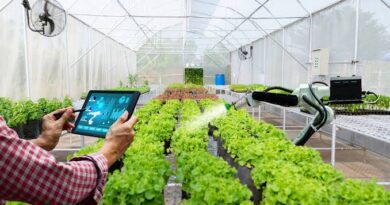The Different Crop Plant Forms
A crop plant is a plant grown for a particular purpose. Plants like animals are living things. As livings, they have various parts which enable them carry out their daily life process.
Plant life-form schemes constitute a way of classifying plants alternatively to the ordinary species-genus-family scientific classification. In colloquial speech, plants may be classified as trees, shrubs, herbs (forbs and graminoids), etc.
Crop plants consists of two main parts which are: the shoot system and the root system.
Functions of Different Parts of a Plant
The Root
The root part is the part of the plant inside the soil. We have two types of roots. The tap root and fibrous root. The tap root consists of one major root from which various minor branches arise while the fibrous root consists of numerous similar fine roots all of which grows from the base of the plant.
Functions of the Roots
They anchor [holds] the plant firmly to the ground.
They absorb water and mineral salts from the soil and passes them to the stem.
They serves as storage organs in some crops e.g cassava.
The Stem
The stem bears the leaves, buds, flowers and fruits. The functions include:
It supports the leaves, flowers and fruits.
It conducts water and minerals salts as well as manufactured food to different parts of the plants.
In some plants, the stem serves as a storage organ e.g. sugar cane.
The Leaf
The leaf is usually attached to the stem by a leaf called the petiole and a blade called ‘’lamina’’. A typical leaf contains veins through which water, plant food and mineral salt pass.
The leaf manufactures food and transfers it to the stem. All green plants are capable of producing their own food by a process known as photosynthesis in the presence of sunlight.
It perform the following functions:
The leaves manufacture food for the plant.
Some leaves serve as storage organs e.g. as in onions.
The Flowers
The flower is the reproductive part of flowering plants. It is the region where the male and female organs produce the pollen grain and ovary respectively.
The flower contains the ovary which develops to form fruit after pollination and fertilization. The ovules inside it develop to form the seeds. Pollination is the transfer of pollen from the anthers to the stigma.
Read Also: The Definition and Classifications of Cropping System
Types of Crop Plant Form

1. Monocotyledonous crops: these are E.g. All cereals & Millets, They usually have narrow and long leaves and they include certain families of grasses like: orchids and lilies.
Palms e.g. coconut palm, oil palm, raffia palm, and royal palm are the common trees in this group. Maize, guinea corn, millet, rice and wheat are the food crops in this group of plants. Sugar cane is also in this group and it is industrial.
2. Dicotyledonous crops: these are crops that have two cotyledons in the seed. e.g. all legumes & pulses. This group has broad leaves unlike the monocotyledons whose leaves are narrow, and long. Cashew, cotton and cocoa are the industrial crops in this group.
Tress like kola, grape fruit, guava tress, paw-paw, mango, silk cotton is also found in this group. Most vegetables like: ewedu, okro, melon, cowpeas, yam and sweet potatoes also belong to this group.
Differences between monocotyledonous and Dicotyledonous plants
| Monocotyledons | Dicotyledons |
| They have one cotyledon seed | They have two cotyledon seeds |
| The leaf has parallel veins | Their leaf has branching veins |
| Their stem has bundles of vascular tissues scattered throughout the stem | Their stem has bundles of vascular tissues arranged in a ring |
Related: Factors that affect African Land Snails Survival








